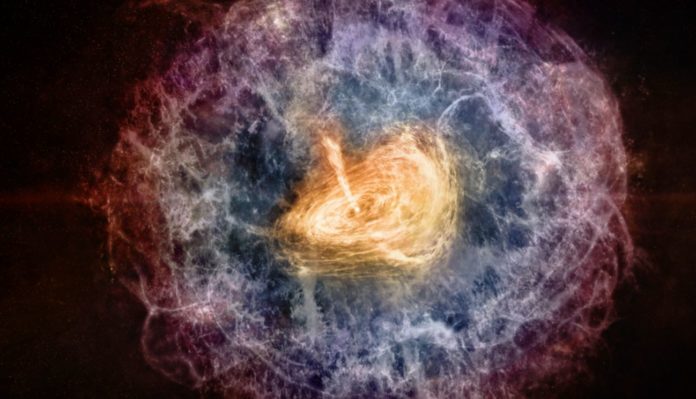Astronomers using data from the VLA Sky Survey (VLASS) identified one of the youngest known neutron stars, a superdense remnant of a huge star that erupted as a supernova. Bright radio emission generated by the spinning pulsar’s magnetic field has only recently emerged from behind a dense shell of debris from the supernova explosion, according to images from the National Science Foundation’s Karl G. Jansky Very Large Array (VLA).
The object, known as VT 1137-0337, is located 395 million light-years from Earth in a dwarf galaxy. In January of 2018, it initially appeared in a VLASS photograph. It was not seen in a 1998 photograph of the same location created by the VLA’s FIRST Survey. Later VLASS observations in 2018, 2019, 2020, and 2022 confirmed this.
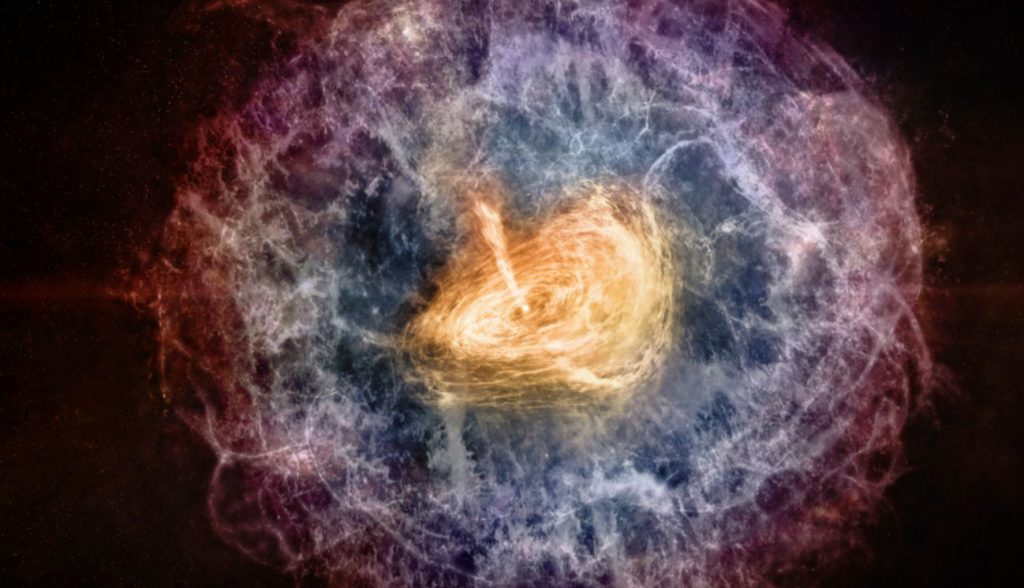
“What we’re most likely seeing is a pulsar wind nebula,” noted Dillon Dong. When the intense magnetic field of a rapidly spinning neutron star accelerates nearby charged particles to nearly the speed of light, a pulsar wind nebula is formed.
“Based on its characteristics, this is a very young pulsar,” noted Gregg Hallinan, Dong’s Ph.D advisor at Caltech. It could be “as young as only 14 years, but no older than 60 to 80 years”.
The researchers presented their findings at a meeting of the American Astronomical Society in Pasadena, California.
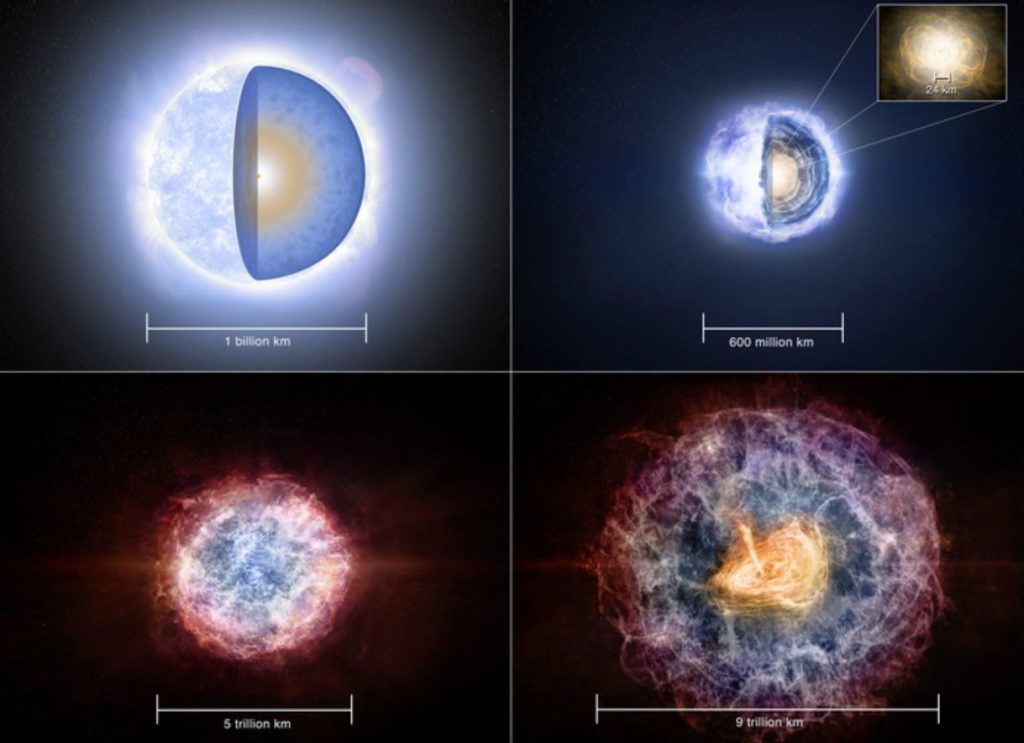
Dong and Hallinan found the object in VLASS data, an NRAO initiative that began in 2017 and aims to survey the entire sky observable from the VLA (about 80% of the sky). VLASS will scan the sky three times over the course of seven years, with one of the goals being to discover transitory objects. In the first VLASS survey from 2018, the scientists discovered VT 1137-0337.
When that VLASS scan was compared to data from the FIRST VLA sky survey, researchers discovered 20 unusually bright transient objects that could be related with known galaxies.
“This one stood out because its galaxy is experiencing a burst of star formation, and also because of the characteristics of its radio emission,” Dong explained. SDSS J113706.18-033737.1 is a dwarf galaxy with a mass of approximately 100 million times that of the Sun.
In analyzing the properties of VT 1137-0337, scientists investigated numerous plausible causes, such as a supernova, gamma-ray burst, or tidal disruption event in which a star is torn by a supermassive black hole. They came to the conclusion that a pulsar wind nebula is the best explanation.
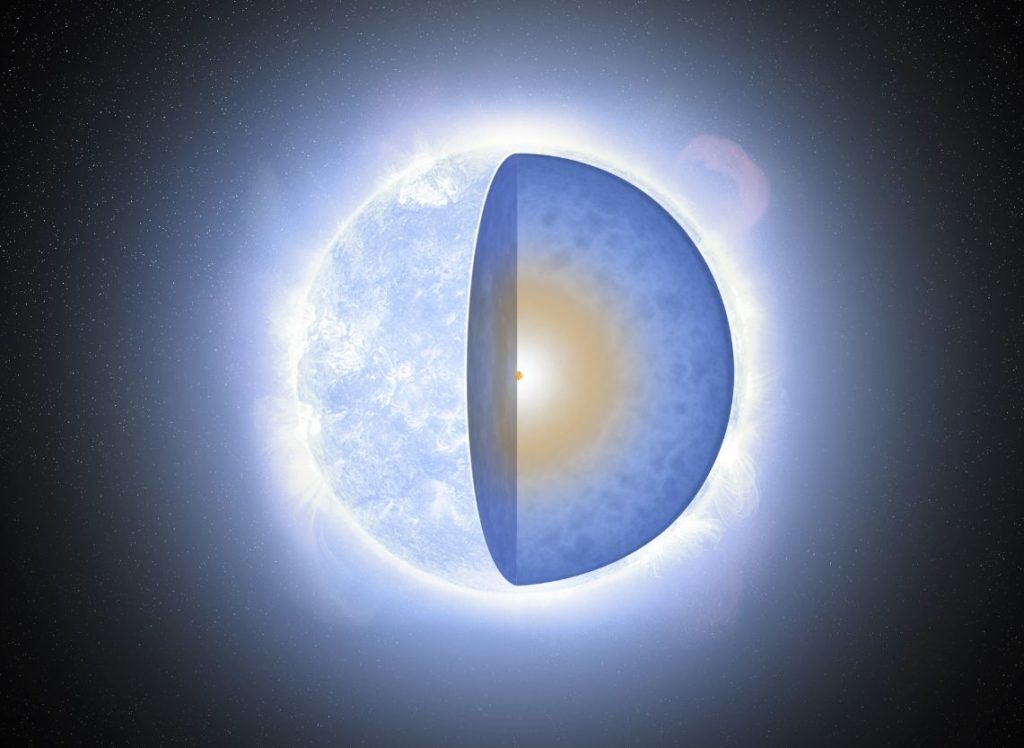
In this case, a star much bigger than the Sun exploded in a supernova, leaving a neutron star behind. The majority of the mass of the original star was flung outward as a shell of debris. The neutron star spins quickly, and its enormous magnetic field accelerates charged particles in the surrounding space, resulting in significant radio emission.
The radio emission was initially obscured by the shell of explosion debris. That shell grew ever less dense as it expanded, allowing radio waves from the pulsar wind nebula to flow through.
“This happened between the FIRST observation in 1998 and the VLASS observation in 2018,” according to Hallinan.
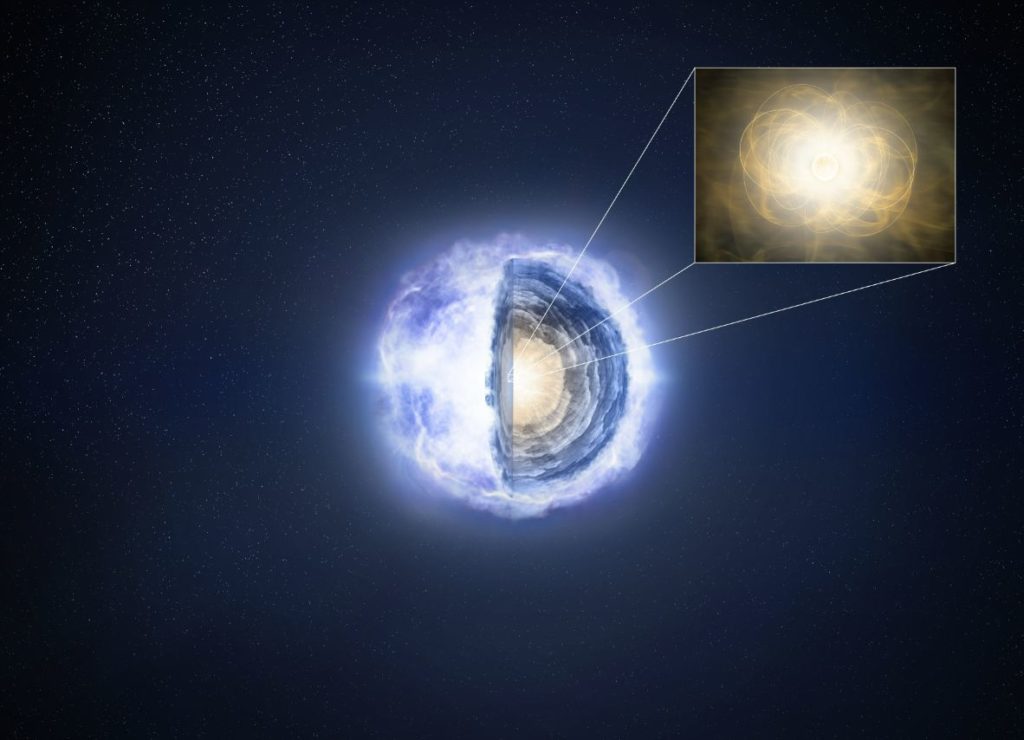
The Crab Nebula in the constellation Taurus, which was formed by a supernova that exploded brightly in the year 1054, is probably the most renowned example of a pulsar wind nebula. Small telescopes can easily see the Crab today.
“The object we have found appears to be approximately 10,000 times more energetic than the Crab, with a stronger magnetic field,” added Dong. “It likely is an emerging ‘super Crab’.” he continued.
While Dong and Hallinan believe VT 1137-0337 is most likely a pulsar wind nebula, the neutron star’s magnetic field could be powerful enough to define it as a magnetar, a type of super-magnetic phenomenon. Magnetars are a leading contender for the enigmatic Fast Radio Bursts (FRBs) that are currently being investigated.
“In that case, this would be the first magnetar caught in the act of appearing, and that, too, is extremely exciting,” Dong remarked.
In fact, several Fast Radio Bursts have been linked to persistent radio sources, the nature of which is likewise unknown. They exhibit features that are strikingly similar to VT 1137-0337, but no evidence of high variability.
“Our discovery of a very similar source switching on suggests that the radio sources associated with FRBs also may be luminous pulsar wind nebulae,” Dong speculated.
The astronomers want to keep watching the object to learn more about it and see how it changes over time.
Image Credit: NRAO
You were reading: Astronomers Find Evidence Of Galaxy’s Most Powerful Pulsar
